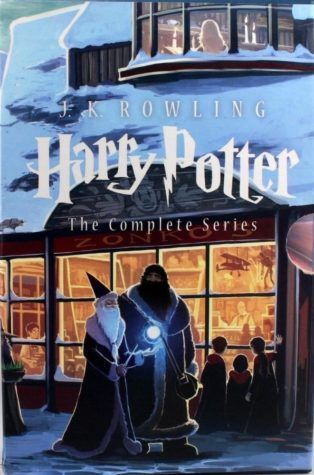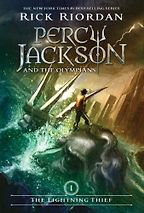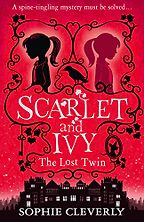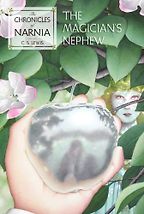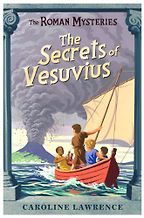So, you’ve just finished reading the Harry Potter books and you want to find more books that are as good. If you’re a diehard Potter fan, you will probably already know that beyond the original seven books in the series there are a few add-ons: The Tales of Beedle the Bard, Quidditch Through the Ages, Harry Potter and the Cursed Child (Parts One and Two), Fantastic Beasts & Where to Find Them and Fantastic Beasts: The Crimes of Grindelwald. These are not engrossing novels—the first two are short, the others scripts for plays (The Cursed Child) or films (Fantastic Beasts)—but if you really love Harry Potter and the world he lives in, that may not be an issue.
At some point, however, it’s time to move on. These recommendations of books like Harry Potter are mostly based on my experience with my own kids. (I read the Harry Potter books to them while travelling around China and we all caught the bug). In my choices, I’ve looked for books that capture some of the different elements of what was so appealing about Harry Potter:
At least for my kids, the series that is hands down the most like Harry Potter is the Percy (aka Perseus) Jackson series by ex-English teacher Rick Riordan. As in the Harry Potter series, the main protagonist discovers something about himself and ends up in a magical place.
Combining Greek myths with modern America (Mt Olympus is now on top of the Empire State Building) and learning difficulties with special powers (dyslexia helps with reading ancient Greek), there is a lot to love about this series, which seems to captivate kids anywhere from age 8 to age 14. If Harry Potter is set in Hogwarts, the Percy Jackson series is set at Camp Halfblood, a summer camp in Long Island, and it is from there that the adventures start out. If Harry has Hermione and Ron, Percy has Annabeth and Grover.
The book to start with in the series is The Lightning Thief (or you can take the plunge and buy the Percy Jackson boxset: it’s hard to go wrong). Rick Riordan has also written a number of other series you can move on to, which are explained by 13-year-old Alex (my son) here.
Harry Potter was not the first book to feature a wizard, and it’s worth reading some of the older books that (presumably) inspired JK Rowling. Ursula Le Guin’s A Wizard of Earthsea (1968) is a perennial favourite on Five Books. In the book, a boy who discovers he has magical powers ends up at a wizarding school and fighting evil. Despite the similarities, A Wizard of Earthsea is quite a different book from Harry Potter. The school (Roke) does not play the central role Hogwarts does and the writing has a bit more of an epic, somewhat formal feel.
One other book to mention in terms of the inspiration behind Harry Potter: if you haven’t read it yet, you’ll find quite a bit that’s familiar from Harry Potter in The Lord of the Rings. This is a book I devoured as a 13-year-old and enjoyed rereading recently for Five Books. My kids found it a bit harder going, though we did listen to the first two volumes as audiobooks in the car.
Part of Harry Potter’s appeal is that it’s a boarding school novel. This is a tremendously popular genre of books in which these traditionally rather grim British institutions are transformed into places of fun and adventure. It’s an exciting reading experience: kids living without their parents, questioning authority, and embarking on adventures with friends they’re thrown together with for 12 weeks at a time.
There are a lot of boarding school novels for kids out there, but in our house, the most popular series is Scarlet and Ivy by Sophie Cleverly. The two main characters solve mysteries and uncover secrets from the past. The series has no magic in it but, like Harry Potter, was completely engrossing to my two daughters.
If it’s the magic in Harry Potter that appeals, it’s also worth reading The Magician’s Nephew (1955) by CS Lewis. Most people are familiar with the Chronicles of Narnia: this book, The Magician’s Nephew, is part of the series but precedes The Lion, the Witch and the Wardrobe by a millennium. Like JK Rowling, CS Lewis is very good at juxtaposing the everyday and the magical. As the book opens, you can almost feel yourself in 1950s London, as Polly and Digory meet over the garden wall.
The Roman Mysteries series is different from the other books on this list. It offers an entry not into a magical world, but an ancient one. Like Harry Potter, it’s a group of friends working together, led by a 12-year-old girl called Flavia Gemina. It’s another series that I read out loud to the kids: we read all 17 of them together.
The first book in the series, The Thieves of Ostia, introduces the characters and the town they live, Ostia, whose ruins you can still visit near Rome’s main airport, Fiumicino. The second book, The Secrets of Vesuvius, about the eruption of Vesuvius, is our favourite. Caroline Lawrence, the author, studied Classics at Berkeley and won a Marshall Scholarship to Cambridge, and she seems to use genuine sources (eg Pliny) to recreate the Roman world she describes. Not only is the series enjoyable and moreish, but you really will learn a lot about life in ancient Rome.
Get the weekly Five Books newsletter
Five Books interviews are expensive to produce. If you've enjoyed this interview, please support us by donating a small amount.
